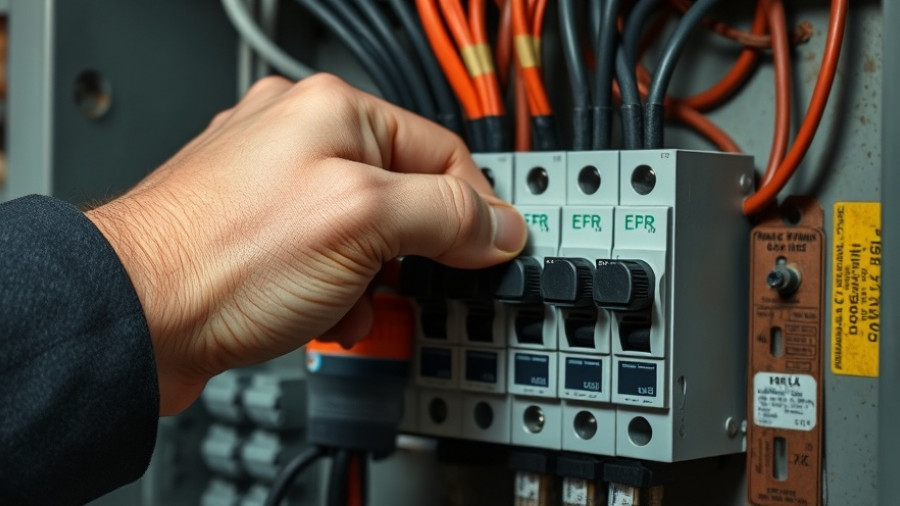Did you know that an astonishing 75% of consumers openly support the right to repair movement? This isn’t just a trend—it's a groundswell that's actively reshaping consumer rights, local economies, and environmental policy worldwide. If you’ve ever felt frustrated by a device you couldn’t fix or the high cost of replacing everyday gadgets, understanding this movement could profoundly empower your choices, your wallet, and even your community.
How the Right to Repair Movement is Revolutionizing Consumer Rights
The right to repair movement is more than a policy discussion—it's a rallying cry for consumer empowerment in an era dominated by closed systems and restrictive warranties. Imagine a world where you can fix your own cell phone, laptop, or appliance without being forced into expensive, proprietary repair chains. The movement compels manufacturers to make replacement parts, repair manuals, and diagnostic tools available to the public, thus lowering repair costs and expanding repair options far beyond authorized repair shops.
This revolution is no small feat: it challenges long-standing corporate practices that lock out independent repair providers and restrict DIY solutions. Driven by consumer demand and persistent advocacy, repair legislation is rolling out across state legislatures and even internationally, marking a turning point for product ownership and corporate accountability. As more laws pass, we’re seeing authorized repair no longer as the only option—independent repair shops and even individuals are catching up, saving money and extending the lifespan of digital electronic devices.
-
A striking 75% of consumers support the right to repair movement—discover what this means for you.

-
Key changes in repair legislation now shaping the future.
Understanding the Right to Repair Movement: Foundations and Growth
Origins of the Right to Repair Movement and Why It Matters
The right to repair movement originated in the late 20th century, with grassroots advocacy from hobbyists, independent repair shops, and consumer rights groups. Initially focused on items like automobiles and agricultural equipment, its scope rapidly broadened alongside the digital revolution and the proliferation of consumer electronics. By pushing back against manufacturers who refused to share vital information, these early activists laid the groundwork for greater transparency and fair competition in repair markets.
As digital products permeated our daily lives, the lack of repair access became frustratingly common. From inaccessible parts pairing protocols in smartphones to strict copyright law utilized to restrict diagnostic access, consumers realized that their ability to repair —and by extension, their true ownership—was under threat. This collective awareness galvanized both individual consumers and organized advocacy groups to fight for legislative changes at state and federal levels, resulting in the thriving movement we see today.
The Evolution of Repair Legislation Through the Years
Over the decades, repair legislation has evolved remarkably. Earlier laws targeted monopolistic practices in car repairs, but modern repair bills address a far broader range of consumer electronics, including mobile phones, computers, kitchen appliances, and even medical devices. Major milestones include New York and Oregon’s pioneering policies and the advocacy of the Repair Association , which has been instrumental in lobbying for accessible repair standards.
Current trends focus on making diagnostic and replacement parts available to both independent repair providers and consumers. Federal legislation, including the Right to Repair Act , aims to ensure uniform standards across states, while organizations like the Federal Trade Commission monitor and enforce compliance. As parts pairing advances and manufacturers seek to embed repair restrictions at the hardware or software level, the movement adapts—pushing for repair-friendly updates to copyright and patent law.

Who Drives the Repair Bill Initiatives? The Role of Executive Directors and Advocacy Groups

The ongoing success of this movement relies heavily on these leaders’ ability to harness grassroots support, galvanizing thousands of individuals to contact representatives and demand statutory change. By collaborating with environmentalists, small business owners, and consumer advocacy networks, executive directors make the repair movement a force that can’t be ignored. Their tireless advocacy is evident every time a new repair bill is introduced, passed, and enacted.
Core Benefits: Why the Right to Repair Movement Matters to You
Economic Advantages for Consumers and Small Businesses
One of the biggest wins from the right to repair movement is the economic empowerment of individuals and small businesses. By increasing access to affordable replacement parts and enabling competition between independent and authorized repair providers, repair legislation drives down the cost of keeping your electronics functional. Repair shops flourish in this new environment—making it easier for you to fix a beloved cell phone or kitchen appliance without breaking the bank.
Local economies also benefit, as small businesses generate jobs and foster trust within their communities. Consumers now have far more agency in deciding who repairs their devices, and independent shops can thrive instead of being driven out by manufacturer restrictions. In essence, every dollar spent at a neighborhood repair shop goes further—supporting both your wallet and local suppliers.
-
Vibrant local repair shop, small business owner repairing a smartphone for a smiling customer, animated expressions, exchanging device, Photorealistic High Fidelity Lifelike, shop interior filled with tools and rescued electronics, highly detailed, interaction between customer and owner, warm colors, ambient window light, shot with a 50mm camera lens.

Repair Legislation’s Impact on Product Longevity and Cost Savings
Repair legislation directly boosts product longevity and slashes lifetime ownership costs. Instead of being funneled into a cycle of premature device obsolescence, you can now fix your digital electronic gear and enjoy many extra years of reliable service. Whether it’s your laptop, tablet, or washing machine, these new laws reduce e-waste and keep products from ending up in landfills before their time.
In practical terms, this means you can avoid costly upgrades and staggered replacement purchases. By making repairs accessible, affordable, and less intimidating, the repair movement transforms what it means to own technology. Savvy consumers and businesses have already reported significant savings—sometimes keeping cell phones and home technology working perfectly for years beyond the manufacturer’s “expected” lifespan.
Environmental Impact: Repair Bill Effects and Sustainability
The sustainability gains from the right to repair movement are immense. Because repairable products have longer usable lives, there’s less resource extraction, fewer emissions, and reduced toxic waste. By encouraging manufacturers to create repair-friendly systems and empowering everyday people to choose repair over replacement , the movement is a major force in combating the growing tide of global electronic waste.
Community repair events, upcycled electronics in cityscapes, and thriving repair shops all point toward a vision of collective environmental responsibility. Each successful repair represents a victory not just for individual consumers, but for the planet as a whole. This is why environmental groups are among the strongest supporters of repair bills and sustainable repair laws.
What You'll Gain from This Insightful Guide
-
Clear explanations of how the right to repair movement affects your everyday choices
-
Comprehensive overview of recent repair legislation and the repair bill

-
Actionable tips to engage with and benefit from the right to repair movement
Repair Bill: Landmark Legislation Transforming Consumer Choice
Success Stories: Executive Directors Pushing the Repair Bill
Across the United States and globally, executive directors are making headlines for their pioneering work in passing critical repair bills. By forming alliances with lawmakers and mobilizing community groups, these leaders have transformed public frustration into actionable law. For instance, after years of tireless effort, they celebrated significant milestones in states like New York and California with the passage of robust right to repair laws.
These stories of advocacy are more than just inspiring—they set precedents. When a determined executive director testifies before a legislative hearing or when a repair association holds a town hall meeting, they chip away at corporate barriers and energize a larger cultural shift toward sustainable living and genuine product ownership.
How New Repair Bills are Being Enacted in Different States
The path for new repair bills looks different across state lines. States such as California (through SB 244) and New York are leading the charge, requiring manufacturers to supply parts, documentation, and technology necessary for repairing consumer electronics and appliances. Meanwhile, other states are at various stages of debating or enacting similar or even broader repair laws. This patchwork approach fuels both innovation and collaboration, as each region adapts the movement to its unique regulatory environment.
States also collaborate closely with organizations such as the Federal Trade Commission and local repair alliances to monitor compliance and adjust legislation as technology evolves. A growing number of advocacy victories show just how much influence persistent, locally-driven efforts can have—especially when coupled with engaged communities and well-informed consumers demanding transparency from original equipment manufacturers.
"If you can't fix it, you don't really own it."—A Leading Executive Director in the Right to Repair Movement
Comparing Global Approaches to the Right to Repair Movement
|
Country/Region |
Key Repair Law/Act |
Scope |
Level of Access |
Year Enacted |
|---|---|---|---|---|
|
United States |
Right to Repair Act, SB 244 (California) |
Consumer electronics, appliances, digital devices |
Independent repair shops, consumers |
2022–2025 (various bills) |
|
European Union |
Ecodesign Directive, Right to Repair Law |
Household electronics, smartphones, white goods |
Authorized/independent repair, consumers |
2021 |
|
Australia |
Repair Rights under Australian Consumer Law |
Consumer goods, electronics |
Consumers, repair businesses |
2019 onward |
|
Canada |
Various Provincial Right to Repair Bills |
Electronics, automotive, farm equipment |
Independent repair shops, consumers |
2022–present |
Practical Ways to Support the Right to Repair Movement
-
Educate yourself and your community about repair bills and recent legislation.
-
Participate in local or online right to repair advocacy groups.
-
Choose repair-friendly brands and demand transparency from manufacturers.
-
Share your experiences and successes from engaging with the repair movement.
People Also Ask: Exploring Top Questions on the Right to Repair Movement
What is the Right to Repair Act 2025?
-
The Right to Repair Act 2025 is sweeping repair legislation aimed at ensuring consumers can access necessary tools, parts, and manuals so they can choose how and where to repair their devices. It empowers people and businesses to extend the useful life of products, driving down waste and improving competition.
Did the right to repair bill pass?
-
Several repair bills have passed at the state level, and momentum for national-level legislation is increasing. Explore how various states approach the repair movement and what it means for future consumer rights.
What is the new right to repair law?
-
The new right to repair law includes measures that mandate manufacturers to provide consumers and independent repair shops with fair access to diagnostic information, parts, and tools. This creates a more competitive, transparent, and sustainable market for repairs.
What is the SB 244 right to repair?
-
SB 244 is a California-based repair bill that requires manufacturers to provide parts and documentation for electronic and appliance repairs. This law strengthens the foundation of the right to repair movement and sets a compelling example for other regions.
Frequently Asked Questions on the Right to Repair Movement
-
What products are covered under new repair legislation? New repair laws generally cover consumer electronics, digital electronic devices, home appliances, and often specialized products like agricultural machinery or medical devices, depending on the legislation in your state or country.
-
Can repairing devices void their warranty under the current law? In many jurisdictions, repair legislation prevents manufacturers from nullifying warranties solely due to third-party or self-repair. Always review your product's warranty terms and the laws in your area for best protection.
-
Where can I find resources to start repairing my own products? Local repair shops, community repair events, and online guides from advocacy organizations and parts suppliers are excellent places to begin. Step-by-step tutorials and user forums are also fantastic supports for beginners.
-
How can I participate in advocacy for the repair bill in my area? Get involved by joining local repair associations, signing petitions, contacting state legislators, or following advocacy groups online for up-to-date legislative action and ways you can make a real impact.
Key Takeaways: Empowerment and Responsibility in the Right to Repair Era
-
The right to repair movement is proof that consumers have the power to influence corporate behavior and legislation.

-
Ongoing repair bills demonstrate the impact of sustained advocacy and public support.
The Path Forward: Embracing the Right to Repair Movement for a Sustainable Future
-
Learn more, get involved, and demand your right to repair—your choices today will define the products and freedoms of tomorrow.
Take charge of your technology, support local repair shops, and voice your demand for repair-friendly legislation—your advocacy paves the way for lasting change.
 Add Row
Add Row  Add
Add 




Write A Comment